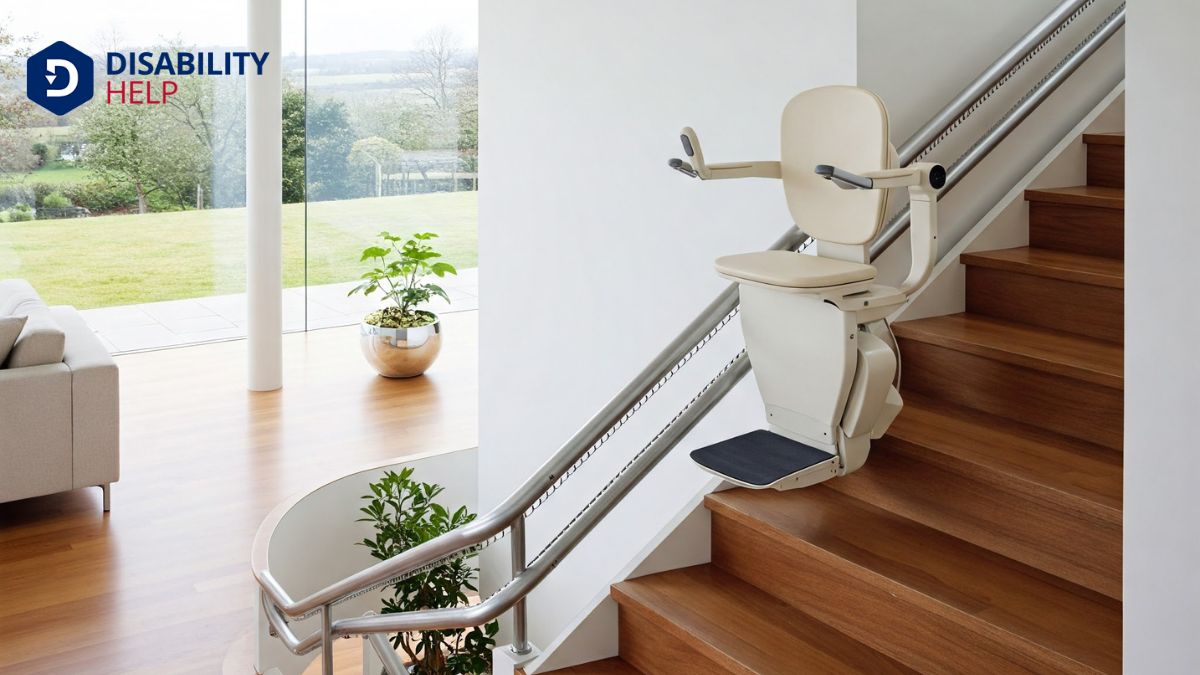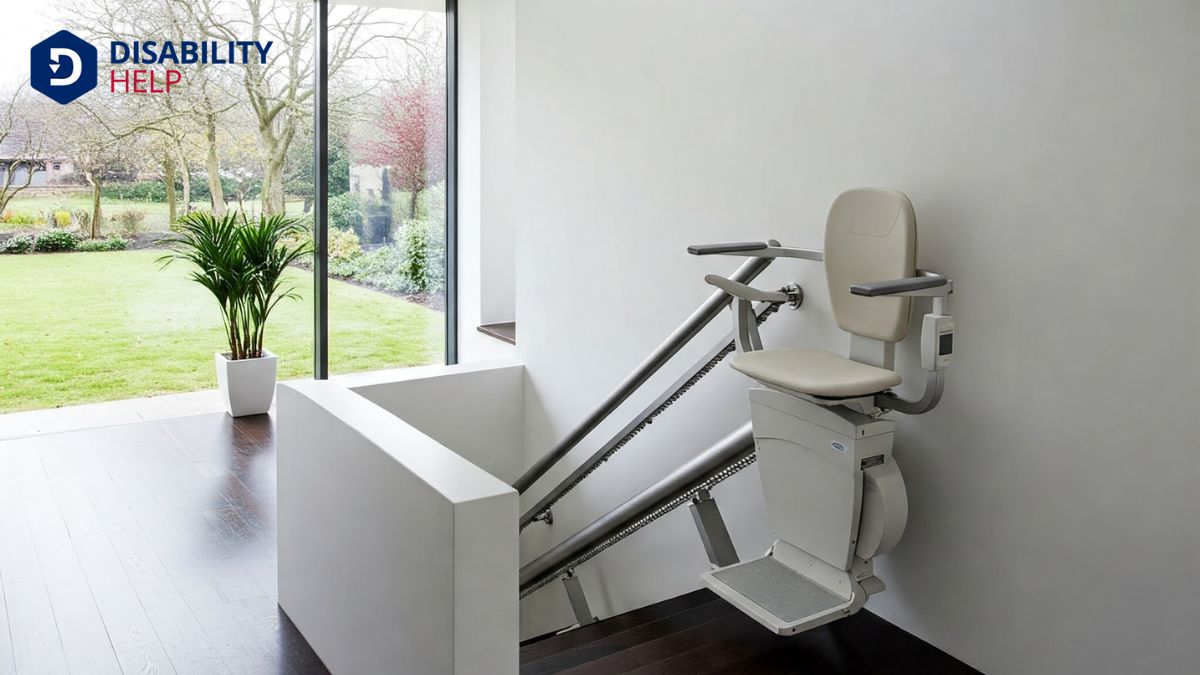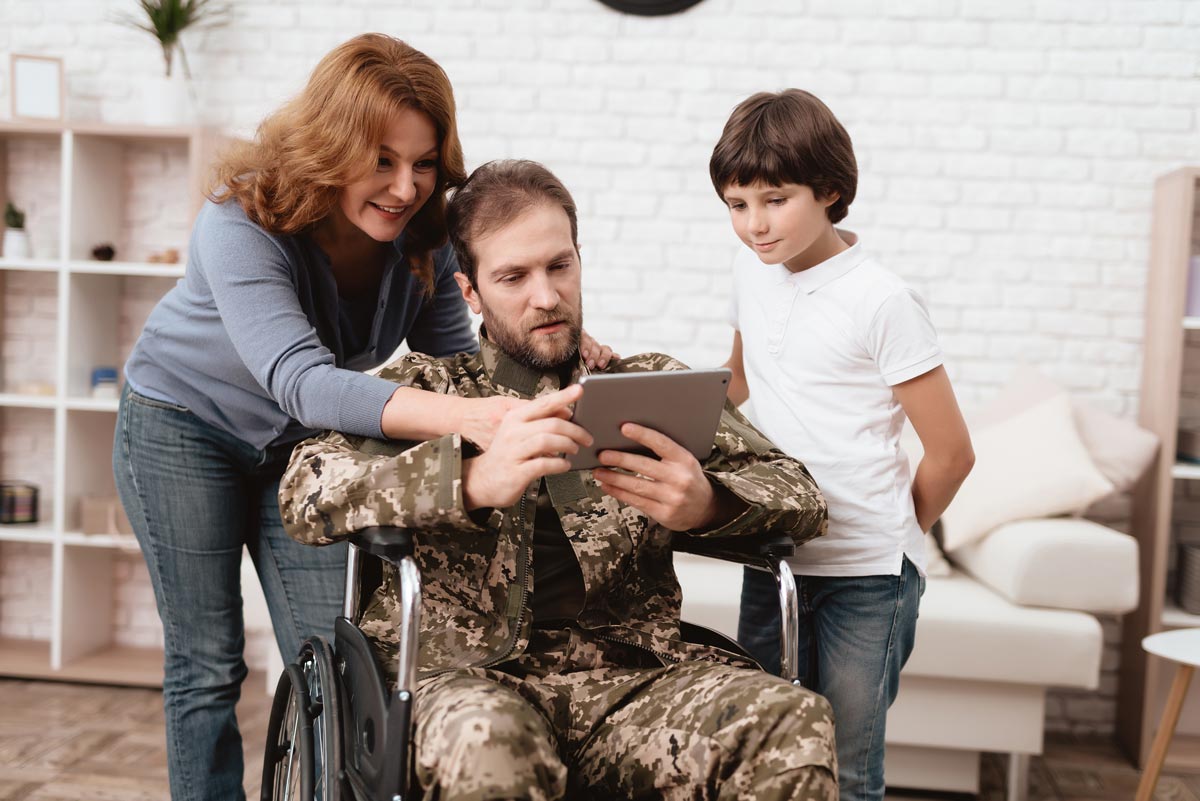As we explore who can receive a free stairliftA motorized chair that travels along a rail attached to a staircase, enabling individuals with mobil... for seniors, it’s vital that we consider the various programs and requirements in place. From government initiatives to non-profit support, options abound for those who qualify. But what criteria must seniors meet, and how does one navigate the application process? Let's examine the eligibility guidelines and the steps needed to potentially secure this essential mobility aid.
Key Takeaways
- Seniors with financial need may qualify for free stairlifts through MedicaidA U.S. government program that provides health coverage to eligible low-income individuals, includin... waivers and specific non-profit programs.
- Veterans can receive assistance through Veterans Affairs programs like SAH and HISA grants for home modifications.
- Eligibility often requires proof of medical necessity and a doctor's prescription for a stairlift.
- Non-profit organizations may offer stairlifts to seniors aged 60 or older who meet certain financial and residency criteria.
- Private insurance policies might cover stairlifts if classified as durable medical equipment (DME) with the necessary documentation.
Understanding the Importance of Stairlifts for Seniors

As we age, maneuvering stairs can become increasingly challenging, so understanding the significance of stairlifts for seniors is essential.
Stairlifts offer a practical solution, enabling us to maintain independence and safety at home. They help prevent falls, which are a significant concern for seniors, allowing us to move between floors without risking injury. This not only promotes peace of mind for us but also reassures our loved ones about our safety.
Stairlifts also contribute to maintaining an active lifestyle. With easier access to different levels of our home, we can engage in daily activities without physical strain.
Additionally, they allow us to stay in our beloved homes longer, avoiding the need for costly home modifications or relocation. Therefore, stairlifts are crucial for enhancing our quality of life.
Government Programs Offering Free Stairlifts
Let's explore how government programs can help seniors access free stairlifts.
We'll look at Medicaid waivers and their eligibility criteria, which many might find beneficial.
Additionally, we'll cover Veterans Affairs assistance programs, as they offer valuable support for those who've served.
Medicaid Waivers Eligibility Criteria
When considering how to secure a free stairlift through government programs, understanding Medicaid waiverA legal provision that allows states to forego certain requirements of federal law, often used in th... eligibility criteria is essential.
Medicaid waivers, also known as Home and Community-Based ServicesPrograms that provide support to individuals with disabilities in their own communities, rather than... (HCBS) waivers, help us access services that aren't typically covered by standard Medicaid. To qualify, we must meet specific financial and medical needs criteria set by our state. Generally, this includes demonstrating income and asset limits, along with a need for assistance with daily living activities.
Each state has its own rules, so it's important to check the specific requirements in our area. We may also need to provide documentation proving our health condition and financial status.
Veterans Affairs Assistance Programs
While Medicaid waivers offer one route to securing a stairlift, another valuable option is exploring Veterans Affairs Assistance Programs. These programs provide essential support to veterans needing accessibilityThe design of products, devices, services, or environments to be usable by people with disabilities.... solutions.
Here’s how we can benefit:
- Specially Adapted Housing (SAH) Grants: These grants help veterans with service-connected disabilities modify their homes, which may include installing stairlifts.
- Home Improvements and Structural Alterations (HISA) Grants: HISA offers funds to veterans for home modifications, including stairlifts, to guarantee safety and accessibility.
- Veterans Directed Home and Community Based Services: This program allows us to manage our own care, including purchasing equipment like stairlifts.
- Aid and Attendance Benefit: If we qualify for this benefit, it may cover the cost of stairlifts, enhancing our living conditions.
These resources empower veterans to maintain independence at home.
Non-Profit Organizations Providing Stairlift Assistance
Let's explore how non-profit organizations play an essential role in providing stairlift assistance to seniors.
We'll discuss the eligibility criteria, walk through the application process, and highlight the various funding sources these organizations offer.
Eligibility Criteria Explained
Maneuvering the eligibility criteria for stairlift assistance from non-profit organizations can feel overwhelming, but we're here to simplify the process.
Understanding these criteria is key to accessing the support available for seniors in need. Here’s a straightforward breakdown to help us determine eligibility:
- Age Requirement: Many organizations require applicants to be at least 60 years old, although some might've different age thresholds.
- Financial Need: Proof of financial need is often necessary, such as income statements or tax returns, to guarantee the assistance goes to those who need it most.
- Medical Necessity: Documentation from a healthcare provider may be required to verify the need for a stairlift due to mobility issues.
- Residence Type: Eligibility might depend on whether the applicant owns or rents their home, as well as the home's suitability for a stairlift.
Application Process Overview
Steering through the application process for stairlift assistance from non-profit organizations doesn't have to be intimidating. We’ll guide you through it.
First, gather essential documents like proof of income, medical necessity, and identification. Each organization may have its own forms, so let's make sure we complete them accurately. It's vital to follow their specific guidelines; missing details can delay our application.
Once we’ve submitted everything, patience is key. Nonprofits often deal with many requests and limited resources. We should expect communication regarding next steps, which could include interviews or additional information requests.
Staying organized and proactive will help us respond swiftly. Finally, let’s keep in touch with the organization to check our application status and demonstrate our ongoing interest.
Available Funding Sources
While managing the financial aspects of acquiring a stairlift, understanding available funding sources is essential. Non-profit organizations can be a lifeline for seniors in need.
Let’s look at some key avenues we can explore together:
- Rebuilding Together: This group helps low-income seniors with home modifications, potentially covering stairlift costs.
- The National Council on Aging (NCOA): They offer a BenefitsCheckUp tool to identify assistance programs, including those for stairlifts.
- Lions Clubs International: Known for community support, local chapters might provide funds or resources for stairlift installations.
- Veterans Service Organizations: For veterans, groups like the VFW or American Legion often have funds allocated for home accessibility improvements.
Insurance Coverage and Policies for Stairlifts
Maneuvering through the world of insurance coverage for stairlifts can be intimidating, but understanding the policies is essential for securing the best options available.
It’s important to first check if our health insuranceA system for paying for medical services, often covering preventive, diagnostic, and treatment costs... plan includes durable medical equipment (DME) coverage, as stairlifts often fall under this category. MedicareA U.S. federal health insurance program for people aged 65 and older, and for some younger people wi... typically doesn’t cover stairlifts, but Medicaid might offer some assistance, depending on state-specific programs.
Let’s not overlook private insurance policies, which may include provisions for stairlifts with a doctor’s prescription.
It’s vital to thoroughly review our policy documents or speak with our insurance provider to clarify what’s covered. By arming ourselves with this knowledge, we can advocate effectively for the support needed, ensuring our loved ones have safe and accessible homes.
Financial Eligibility Criteria for Seniors
Understanding the financial eligibility criteria for seniors seeking free stairlifts is vital to maneuvering available programs successfully.
Let's break down the key points to contemplate so we can better understand what might qualify us or our loved ones.
- Income Limits: Many programs set specific income thresholds. We should check if our income falls within the range for assistance.
- Asset Evaluation: Some programs take our assets into account. Knowing what counts as an asset can help us prepare.
- Medical Necessity: Demonstrating a medical need is often pivotal. We'll want to gather any relevant medical documentation.
- Residency Requirements: Programs may require proof of residency within certain regions. Let's verify we've the necessary documents.
Steps to Apply for a Free Stairlift

Applying for a free stairlift can be a straightforward process if we follow the steps carefully. First, we need to research programs available in our region, as eligibility varies.
Let’s gather all necessary documents, such as proof of income, age, and residency, to support our application. It’s important to contact local agencies or organizations that specialize in senior assistance to see if we qualify for any specific programs.
Once we’ve identified a program, we should fill out the application form meticulously, ensuring every section is complete and accurate.
If required, we might need to schedule an assessment to evaluate our home’s suitability for a stairlift. Staying organized and keeping track of deadlines will help us avoid delays.
Let’s reach out for help whenever needed.
Conclusion
In summary, let's remember that securing a free stairlift for seniors involves traversing various programs and requirements. We should focus on understanding the available government and non-profit options, ensuring all necessary documentation is ready. It's essential to confirm financial need and medical necessity, while also checking if the home can accommodate a stairlift. By preparing thoroughly and staying informed, we can help seniors access the support they deserve, ensuring their homes remain safe and accessible.






